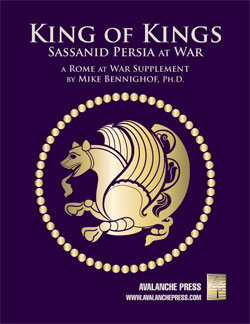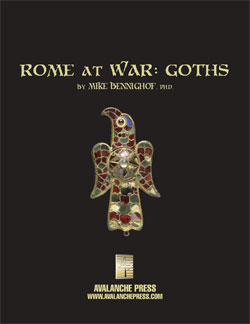King of Kings:
Deep Reading
by Mike Bennighof, Ph.D.
June 2019
Well I went to see the doctor of philosophy
With a portrait of Rasputin and a beard down to his knee
- Emily Saliers, Indigo Girls
 Like Emily Saliers, I studied history at Emory University; I got a very large piece of sheepskin (it’s like two by three feet) while she got famous. So I knew the doctor of philosophy too; the beard only went to his chest though. Emily’s claimed the lyric’s not based on him, and I’m sure that’s true (other details don’t match), but it was a bearded doctor of philosophy with a portrait of Rasputin who introduced me to the term “deep reading.” Like Emily Saliers, I studied history at Emory University; I got a very large piece of sheepskin (it’s like two by three feet) while she got famous. So I knew the doctor of philosophy too; the beard only went to his chest though. Emily’s claimed the lyric’s not based on him, and I’m sure that’s true (other details don’t match), but it was a bearded doctor of philosophy with a portrait of Rasputin who introduced me to the term “deep reading.”
The bearded historian, a true gentleman-academic out of the old school, died some years back but I think about him whenever someone declares a wargame of all silly things to be a historical study. The act of converting data and analysis into the structure of a game – unit capabilities, rules functions and so on – means that wargames just are not the same as a historical study. That conversion leaves a lot of room for fudging, skimping or for just plain making stuff up; my favorite excuses are “I didn’t have the sources needed to research my subject” and “I don’t read X language.”
Academia is a harsh and unfriendly place, one in which every action is judged by disapproving eyes. And sometimes that relentless scrutiny is absolutely necessary – I went to Emory, so I knew Michael Bellesisles (you can google him, I’m not giving him a link). Historical game publishing is its complete opposite, with pretty much no oversight. There are no footnotes in tiny type on wargame pieces, nor is there any peer review (some angry guy ranting on the internet is not “peer review” in the professional sense). There are still “game reviews” published in magazines, many months or even years after a game appears, but we quit sending out review copies when I found some of them appearing on auction sites listed in “mint condition.” So you can sometimes get away with really slim “research” (I have the John Tiller computer game on that! I gots me a game!), and as long as you and/or your friends bloviate hard enough, no one’s going to really know any different. As far as I can tell, even fewer will even care.
All that’s a windup to say that I actually enjoyed researching our upcoming Rome at War: King of Kings expansion book, all the while fully aware that I was doing it to satisfy myself and no one else. That felt strange at first, to seek out knowledge for the thrill of learning rather than from fear of a Bellesislian auto-da-fé, but eventually liberating. I probably could have finished King of Kings a long time ago if I’d just made stuff up, and more than likely no one would have ever noticed. But I found that I like poring through dusty old tomes more than playing video games as a form of “research.” By no means did I make myself expert in the history of Late Imperial Rome, but I did gain a pretty firm grounding in the subject.
So with all this new knowledge, what’s inside this King of Kings book?
Fourth Century Rome saw continuous warfare, mostly against Germans, Goths, Persians and other Romans. The Roman historian Ammianus Marcellinus participated in some of these wars as a staff officer, and wrote in some detail of the campaigns of Julian the Apostate, whom he admired greatly (to the point of apparently fudging a few events to protect his patron’s reputation). Our Fading Legions game follows the Ammianus narrative pretty closely, with Julian’s battle against the Germans at Strasbourg, his campaign against the Persians in 363, and then the climactic Battle of Adrianople (some 15 years after Julian’s death). That’s where Ammianus ends his story, and so the game’s scenario set ends there as well.
King of Kings takes a different approach, one I would have preferred for Fading Legions if I’d had this new-found Roman knowledge back when we published the original game. While Ammianus is by far the most detailed source we have for the period, particularly in military matters, he is not a totally reliable narrator. He leaves things out that he feels unimportant, or that cast his hero Julian in a negative light or his scapegoat Valens in a positive one. And his book seemingly begins in the middle, with the first chapters – the ones that covered important battles and campaigns like Mursa and Singara - lost to time (“seemingly,” as some scholars with actual expert knowledge question whether these early chapters ever existed).
King of Kings concentrates on the entirety of the Roman-Persian conflict under the reign of Shapur II, King of Kings. Battles with the Romans begin 336, when Constantius II assumed rule in the eastern segment of the Empire in place of his dying father Constantine, and continuing until the peace treaty forged by his son Shapur III with the Roman Emperor Theodosius in 384.
Along the way there are some other campaigns involving a few other peoples. Both the Persians and the Romans waged campaigns against the Arab (Saracen) tribes living south of their domains. Shapur II began his reign by making war on multiple Arab tribal confederations in 325, earning the name “piercer of shoulders” (apparently, Shapur had prisoners strung together along a rope). The Romans fought a major campaign (one of those on which Ammianus is silent, since Valens apparently handled it well) in 375 against the rebel Arab Queen Mavia.
Armenia factored into all of the wars between Rome and Persia, with a major campaign and battle in 371 and Armenian detachments appearing in most of the other campaigns on one side or the other. Armenia apparently sent a large force to serve under Procopius in the 363 campaign that departed when Julian offended their Christian religion; Ammianus leaves this incident out of his history as it reflects poorly on Julian’s judgement.
Rome fell into civil war for much of the decade of the 350’s as the usurper Magnentius overthrew and murdered Constantius II’s brother emperor. Constantius marched west to challenge and eventually defeat Magnentius, but only after the fantastically bloody battle of Mursa. Mursa cost more than twice as many Roman lives as the better-known disaster at Adrianople, and arguably did far greater long-term damage to the Roman state’s viability – but Ammianus’ coverage of this war is among the lost chapters of his work.
Shapur II had little opportunity to take advantage of Constantius’ troubles, as steppe tribes made their first major incursions into north-eastern Persia at about the same time. The King of Kings marched to meet them, waging war on the Xionites (a steppe people possibly related to the Huns, possibly unrelated to the Huns, or maybe even Huns themselves – this is still debated) and the remnants of the Kushan Empire in modern-day Afghanistan. With his borders secured and new fortifications under construction, Shapur turned back to the Roman frontier bringing new, probably unwilling Xionite allies with him and renewed his campaigning in 359 with a massive assault on the fortified city of Amida.
King of Kings talks about all of these campaigns, armies and peoples, with new scenarios for Fading Legions to go along with them plus a closer look at Julian the Apostate’s failed war of conquest. To support all of those new scenarios with new armies, King of Kings includes 44 double-sized pieces and 176 square ones to add Arabs, Armenians and Xionites to the game along with some additional Romans and Persians.
The Armenians are very good, the equivalent of the best units in the armies of their ever-shifting enemies/allies. They have excellent heavy cavalry very similar to the Sassanid cataphracts. The Arabs and Xionites are primarily light cavalry, with the Arabs relying on the lance and the Xionites on the bow. All of these armies (except the Xionites) also include infantry of poor to fair quality; it’s the horsemen who carry the weight of battle for everyone in this game except the Romans.
 I ended up with way more material than I could stuff into the King of Kings book, so someday we’ll do another expansion book for Fading Legions called, simply, Goths. It will add not only more Goths and more Goth vs. Roman battles (and Goth vs. Goth battles) but also the Huns storming out of the steppe to disrupt the Gothic way of life. No wonder they’re always all sad and stuff. I ended up with way more material than I could stuff into the King of Kings book, so someday we’ll do another expansion book for Fading Legions called, simply, Goths. It will add not only more Goths and more Goth vs. Roman battles (and Goth vs. Goth battles) but also the Huns storming out of the steppe to disrupt the Gothic way of life. No wonder they’re always all sad and stuff.
At one point I’d wanted to include the Goths, then I seriously considered splitting King of Kings into two smaller-format books, but there’s plenty of stuff for the Persian Wars in one full-sized book, and for the Goths in another. And there’s probably enough stuff for the Germans in a third. That would be enough to turn Fading Legions into a thorough Fourth Century gaming experience. I like that idea.
You can order King of Kings right here.
Please allow an additional six weeks for delivery.
Sign up for our newsletter right here. Your info will never be sold or transferred; we'll just use it to update you on new games and new offers.
Mike Bennighof is president of Avalanche Press and holds a doctorate in history from Emory University. A Fulbright Scholar and award-winning journalist, he has published over 100 books, games and articles on historical subjects.
He lives in Birmingham, Alabama with his wife, three children and his dog, Leopold.
|
